A series of pencil drawings sketched by Juliusz Słowacki during his trip from Alexandria to Cairo, depicting the views of the Nile Delta (Sketchbook of the journey to the East, the National Ossoliński Institute in Wrocław)
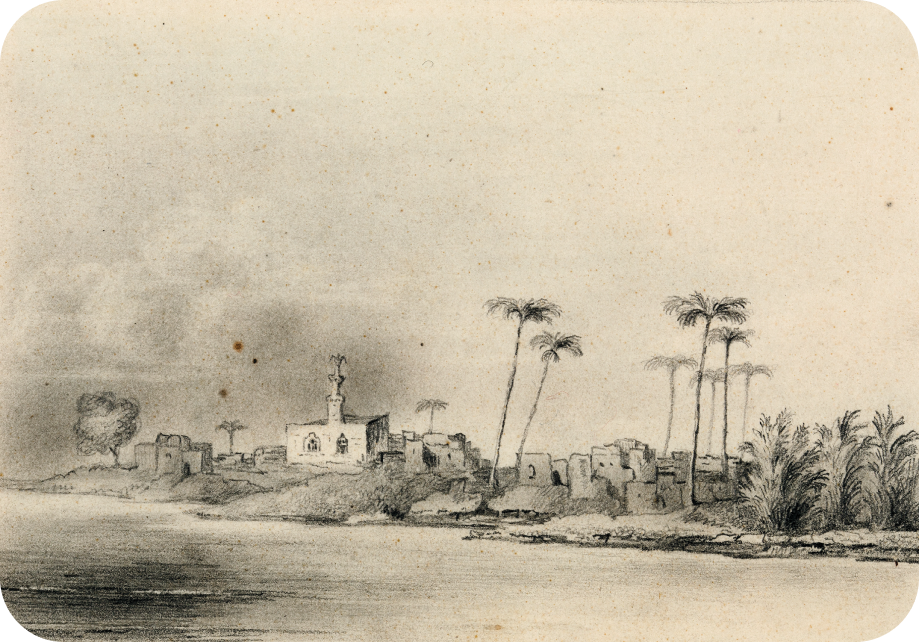
“On the Nile, 27th Oct. 1836”
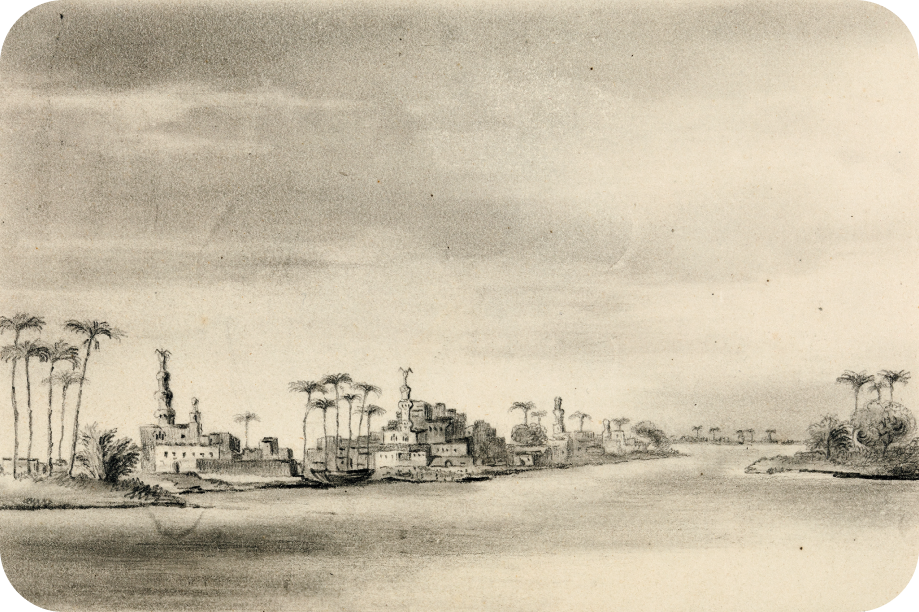
“On the Nile, 27th Oct.”

“On the Nile, 28th Oct.”
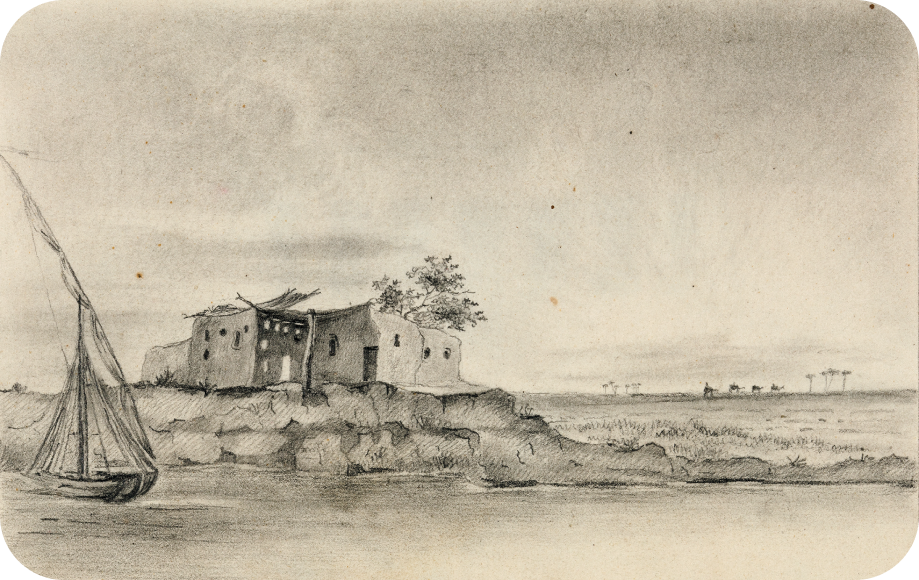
“On the Nile, 29th Oct.”
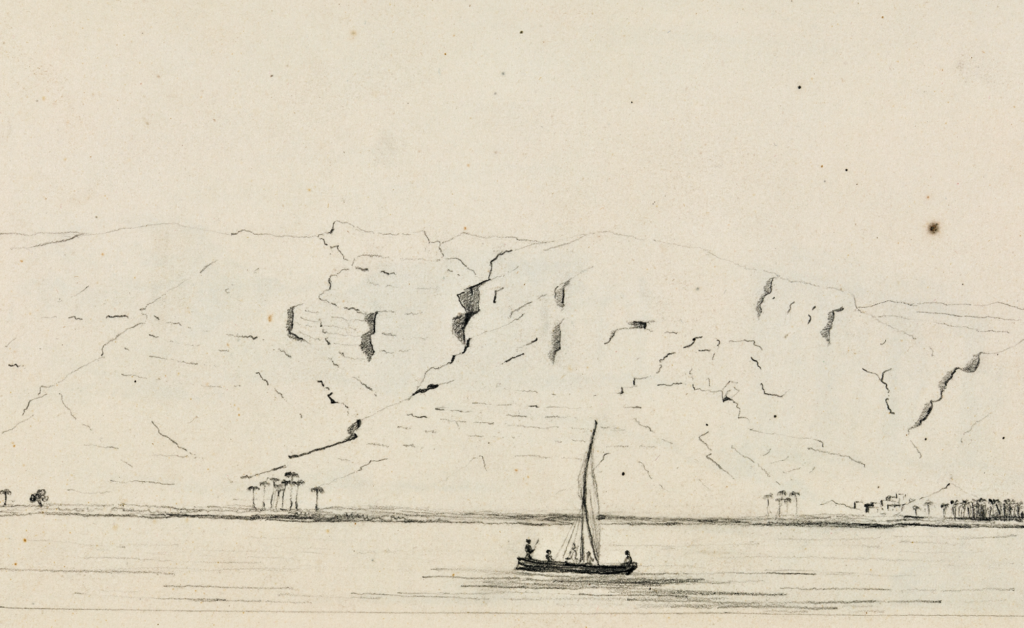
The banks of the Nile south of Asyut, a pencil drawing by Juliusz Słowacki from his Sketchbook of the journey to the East, signed: “On the Nile, 14th Nov. 1836” (the National Ossoliński Institute in Wrocław)
On the 6th of November, having availed ourselves of a boat with a crew of eight, for the duration of a month […], we sailed up the Nile towards the first cataract […]. What a lovely route! I sketched a lot since words would not have sufficed to capture everything that met the eye. Such multitude of cranes gliding across the blue, such profusion of all sorts of waterfowl, such clouds of doves flitting above villages […]. At long last, in Asyut, we saw our first crocodile lying in the sand, which brought us running from the table so we could examine it up close. All of this is now set in my imagination like a beautiful dream.
A letter by Juliusz Słowacki to his mother, 17th February 1837, Beirut
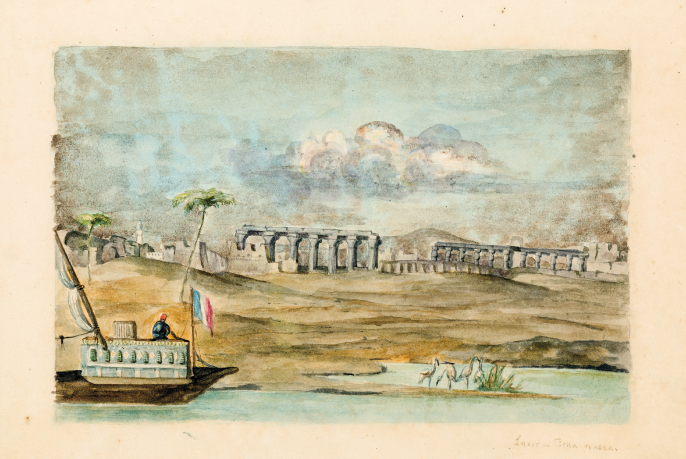
A Nile boat set against the temples of Luxor, a watercolour by Juliusz Słowacki from his Sketchbook of the journey to the East, signed: “Luxor – our boat” (the National Ossoliński Institute in Wrocław)
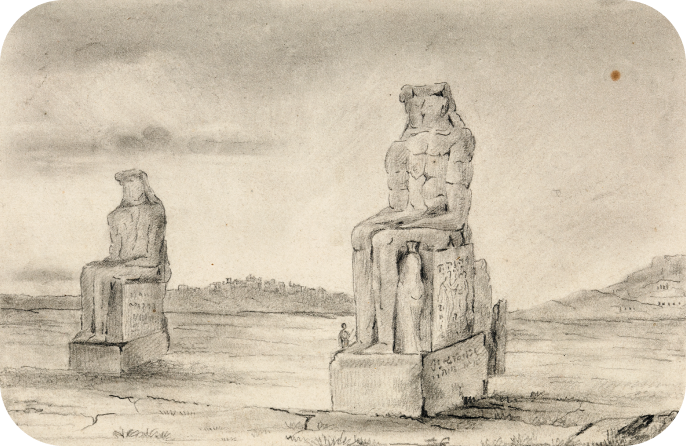
Juliusz Słowacki, a pencil drawing from his Sketchbook of the journey to the East, signed: “The Statue of Memnon at sunset / 21st Nov. 1836” (the National Ossoliński Institute in Wrocław)
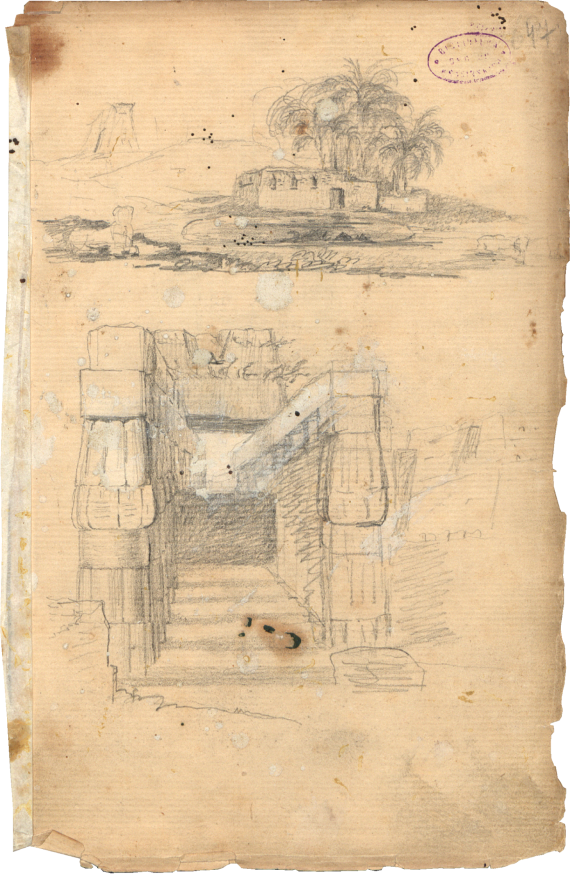
The columns of a temple in Luxor, a pencil drawing by Juliusz Słowacki from his Eastern Notebook (the Russian State Library in Moscow)
The ruins of the city [Thebes] surpass everything with their grandeur. But what I liked the most was the statue of Memnon and another one next to it. […] two giants made in granite, each the height of a three-story house, sitting quietly amids a broad field with their faces turned towards the East.
A letter by Juliusz Słowacki to his mother, 17th February 1837, Beirut
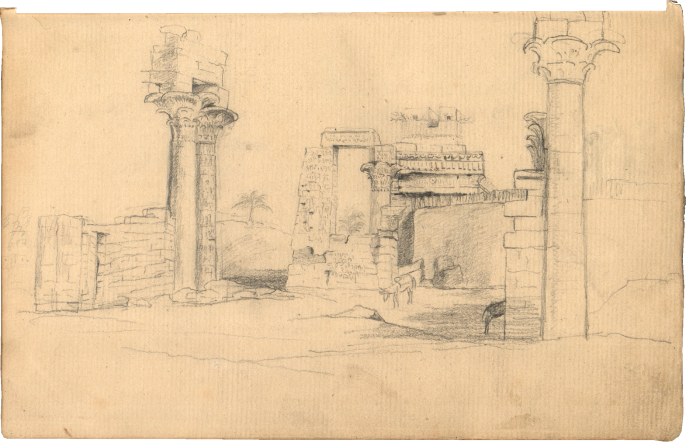
Cleopatra’s Temple in Armant, a pencil drawing by Juliusz Słowacki from his Eastern Notebook (the Russian State Library in Moscow)
Słowacki’s drawing is the only piece of evidence we have for his stay in Armant. There is no mention of it in his notes and letters.
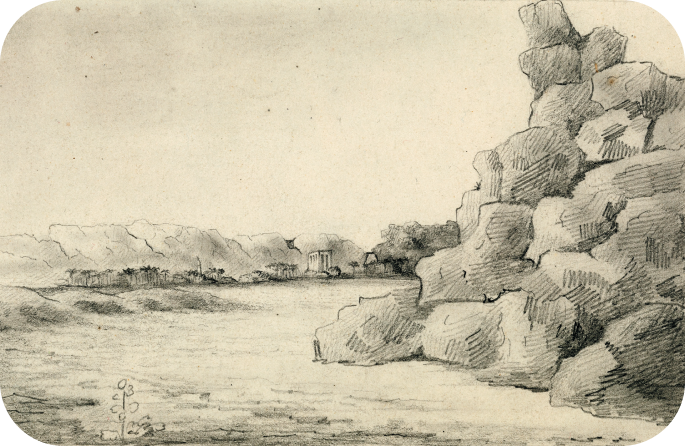
A pencil drawing by Juliusz Słowacki from his Sketchbook of the journey to the East, signed: “The Isle of Philae in Nubia: 26th Nov. 1836” (the National Ossoliński Institute in Wrocław)
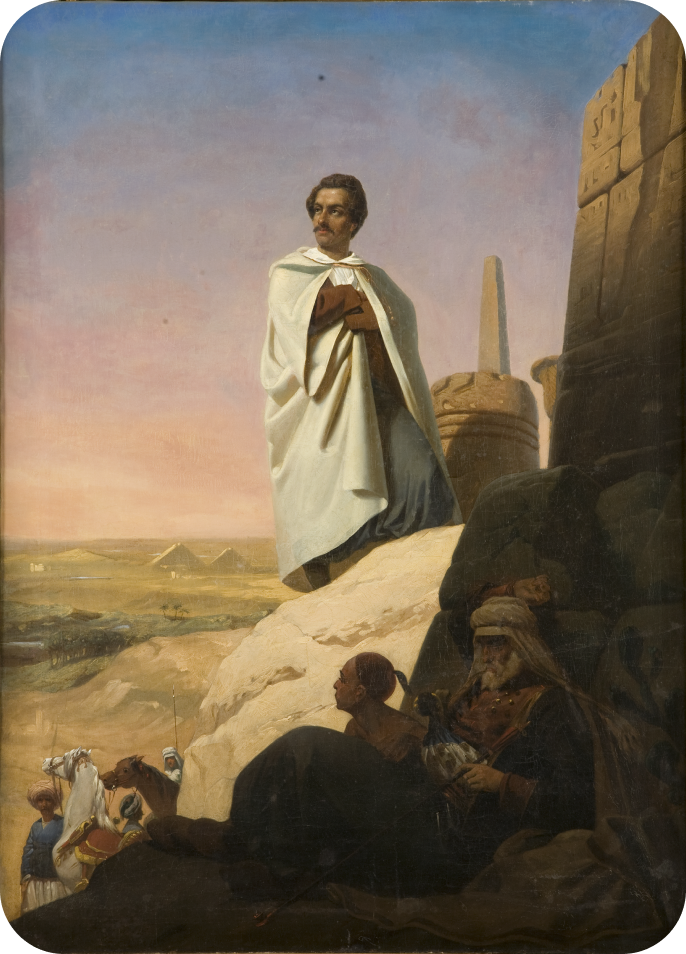
Słowacki at the pyramids, an oil painting by Maciej Gaszyński, 1845, the Museum of Literature in Warsaw